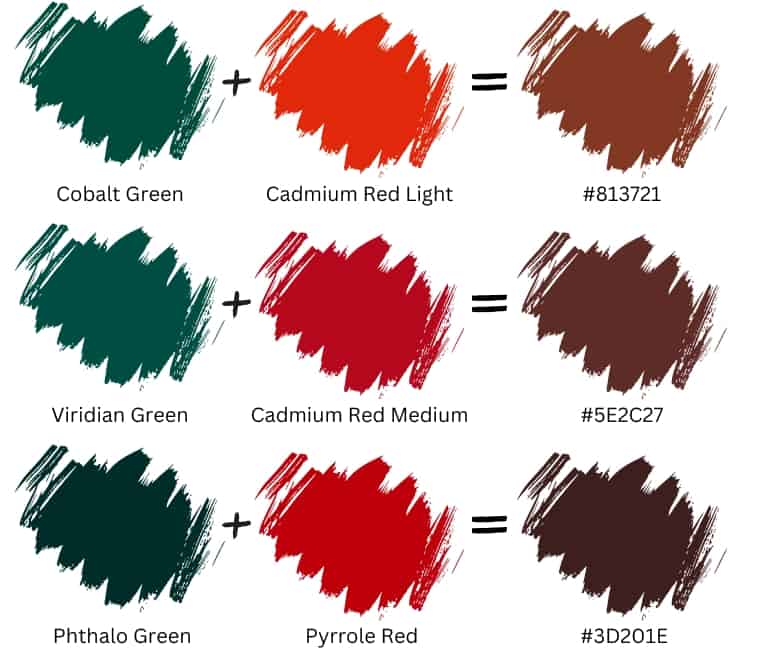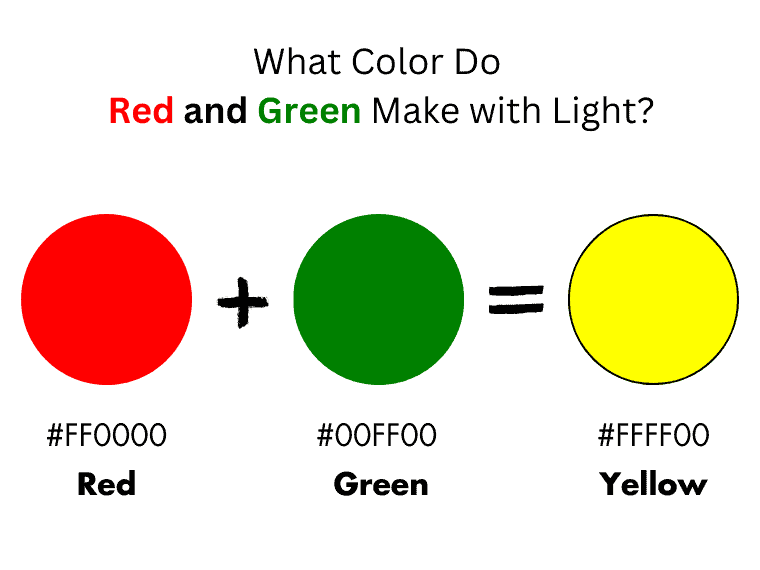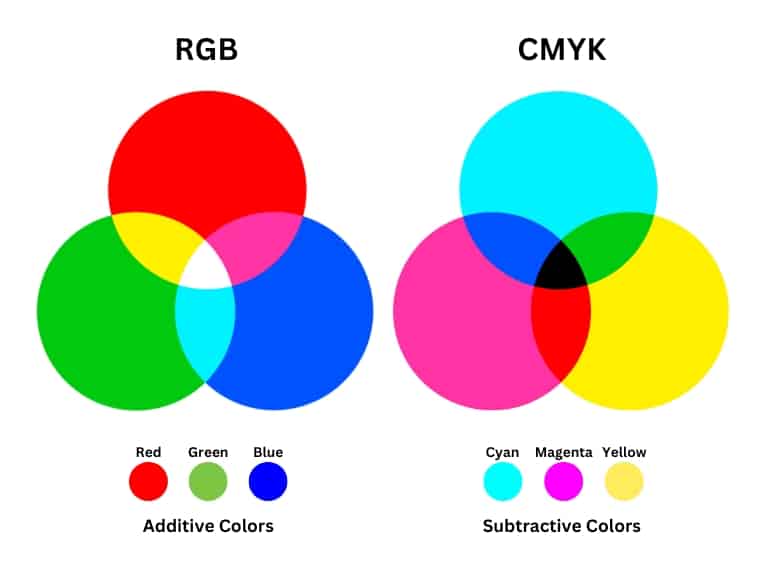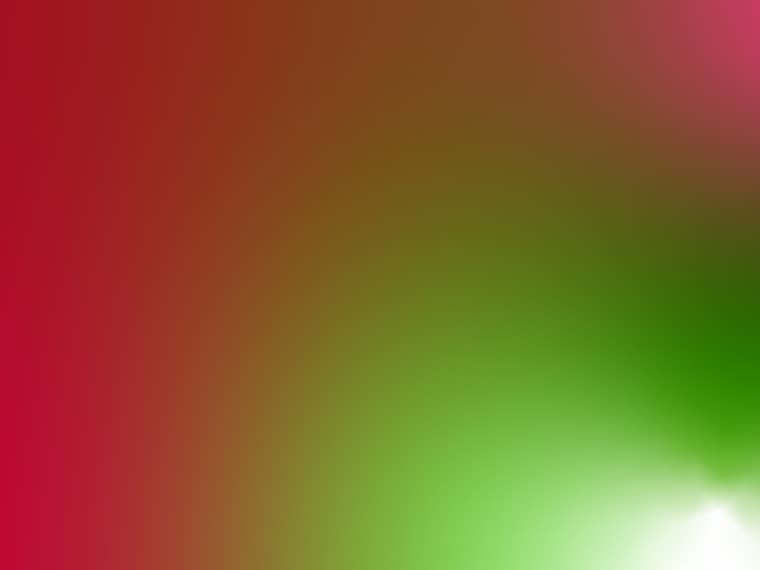Have you ever wondered what color red and green make when mixed? You are not alone. In this article, you will learn what color green and red make when mixed in traditional art and light.
Art enthusiasts frequently ask, “What color do red and green make?” At first glance, the answer may appear obvious – combining red and green would result in a muddy brown, right? However, the truth is a bit more complicated than that.
This article will explore the fascinating world of color theory and what happens when red and green are mixed together. By the end of this article, you will clearly understand what color red and green make when mixed.
What Color Do Red and Green Make with Paint?
When mixing red and green, the color produced is a muddy brown. It’s like mixing all the primary colors of RYB (red, yellow, and blue) because green is made from blue and yellow.
Red and green are considered complementary colors in the traditional color wheel. Colors that are complementary are those that are opposite each other on the color wheel. Therefore, this color scheme is part of color harmony.
Even though the complementary colors create a nice combo and provide great contrast, they clash when mixed.

How to Mix Different Shades of Brown
To make brown, mix red, yellow, and blue paint—the primary colors of the RYB color model. But to get the shade of brown, you want, you can use a few techniques.
The difference between a shade and a tint is that shades are darker by adding black paint, while tints are lighter by adding white paint.
Mixing Lighter Brown
To make a light brown, add a little white paint to the mixture. If you want to make a tan shade, add more white paint to a brown base. Finally, you can add a little red paint to achieve an earthy tone.
If you want to lighten the tone, you can add a splash of yellow paint.
Add a little cadmium yellow to the mixture to make a light, warm brown.
On the other hand, to get a warmer brown, mix green and red, and once you have a base, add a little cadmium red. This will give you a reddish brown close to sienna.
To make a cooler brown, you can make a base by mixing blue and orange and then add cool hues like green or purple.
Mixing Darker Brown
To make a darker brown, make your brown base by mixing red and green, and then add a little blue paint to give it a cooler tone. This is perfect for painting shady trees, for example.
You can add a black splash to achieve a chocolate brown shade. However, be careful when adding black paint, as a small amount changes the shade dramatically.
Tips: You can create different shades of brown by mixing just two complementary colors: a primary color and its complement, a secondary color.
That’s because whenever you blend a primary with a secondary color, you combine all three primary colors: red, yellow, and blue. Do you know why? Because the secondary color is also a mix of the other two adjacent primary colors.
How to Mix Brown Paint?

Suppose you have secondary colors and at least one primary color at hand. In that case, mixing two complementary colors is the easiest way to make brown.
For example, you can make brown by mixing green and red. However, there is a muddy brown. If you want a deeper brown, add more red to your mixture.
If you want to make brown paint from primary colors only, just mix red, yellow, and blue together.
However, the result is only sometimes as expected. Mixing the primary colors (red, yellow, and blue) in equal proportions is the best way to make brown.
Even so, you may not achieve the desired color because primary paint colors are not pure but have color bias.
For example, a yellow may lean more toward green or more toward red. This means that a yellow can have a green or red bias. On the other hand, red can have a blue or yellow bias.
So this also happens by mixing green and red. You don’t achieve the ideal brown but rather a muddy brown. That’s because the green you use is not created from an equal mixture of yellow and blue.
However, adding black and white can darken or lighten the shade.
Why is Brown Used in Art?
Besides the visual association between objects and this color, brown is linked to strong color emotions. Moreover, it has rich color symbolism.
Brown is associated with comfort, warmth, honesty, stability, and security. Moreover, it has relaxing effects and can make you feel safe.
It is often found in nature, from the color of soil to the tones of wood. That is why it is associated with earthiness.
Finally, according to color psychology, this color embodies a sense of strength and reliability.
On the other hand, it can be associated with isolation, like sand in a vast desert. Moreover, it’s linked to sadness or dullness.
Is it Possible to Make Green and Red by Mixing Other Colors?
Green is a secondary color that can be made by mixing two primary colors. For example, mixing blue and yellow in equal proportions produces green.
If you add more yellow, you will achieve yellow-green, an intermediate color. On the other hand, if you use more blue in the mixture, you will create blue-green.
The CMYK color space shows you can make green by mixing cyan and yellow.
Now let’s discuss about red.
What colors make red? Red is a primary color in the RYB and RGB color models. Even though you have learned that primary colors cannot be created by mixing other colors, red can be made by mixing yellow and magenta using a 1:1 ratio. This is what the CMYK color model shows us.
While the RYB model is used in traditional art, the RGB model deals with light. In addition, the CMYK color model is used in the printing world.
Thus, even though you have learned that primary colors cannot be obtained by mixing other colors, the truth is slightly different.
To make red, you have to mix magenta and yellow, the primary colors of the CMYK color system.
What Color Do Red and Green Make with Light?
When it comes to light, things are different from traditional art because there are two completely different color models.

Mixing red and green in the RGB space produces yellow instead of the RYB space used in traditional art, where the same mixture creates a muddy brown.
Yellow in RGB color space is a secondary color, resulting from overlapping red and green light.
Additive versus Subtractive Color Mixing
The RGB color space is an additive model, as opposed to the RYB color space, which is a subtractive model.
To understand why mixing red and green gives you yellow in the RGB space, you must understand the concept of additive and subtractive color mixing.

Additive Color Mixing
The primary additive colors are red, green, and blue – the primary colors of the RGB model.
The RGB color space is an additive color model because it starts with black (darkness) and works by adding different amounts of light to create other colors.
When red, green, and blue combine to their maximum intensity, it produces white light.
Mixing the primary additive colors, you get the subtractive colors: cyan, magenta, and yellow, which are the primary colors of the CMYK color space – a subtractive model.
- Green + Blue = Cyan
- Red + Blue = Magenta
- Red + Green = Yellow
Subtractive Color Mixing
The primary subtractive colors are cyan, magenta, and yellow – the primary colors of the CMYK color space.
The CMYK color space is a subtractive color model because it subtracts different wavelengths of light from white (a piece of paper) to create other colors.
Subtractive color mixing starts with white (white paper) and ends with black once the subtractive colors are mixed.
In this model, colors are created by starting with white (a piece of paper) and then selectively removing or absorbing specific wavelengths of light. Then, the remaining wavelengths of light that are not absorbed by the paper combine to create the perceived color.
For example, suppose you are using cyan ink in printing. In that case, the ink absorbs all of the red wavelengths of light, leaving only the green and blue wavelengths.
By mixing subtractive primary colors (cyan, magenta, and yellow), you create additive primary colors (red, green, and blue). Thus, yellow and magenta make red, while cyan and yellow make green. Finally, by mixing cyan and magenta, you get blue.
Yellow Meaning
Red plus green equals yellow in light (RGB color model) or a muddy brown in paint (RYB color model).
Mixing green and red gives you yellow – a primary color in the RYB model and a secondary color in the RGB model.
Yellow is associated with feelings of cheerfulness, joy, and optimism. Moreover, it is linked to energy, enthusiasm, creativity, warmth, intellect, and perception.
Yellow is the color of joy, happiness, hope, and spontaneity. It has the effect of amusing, energizing, and inspiring you.
On the other hand, this color can also be associated with egotism, cowardice, deception, caution, fear, impatience, and betrayal.
Final Thoughts on What Color Do Red and Green Make When Mixed
Mixing red and green in painting results in a muddy brown, while the same red and green mix in light makes yellow.
Depending on the color space you are working in, red and green make a muddy brown (RYB) or yellow (RGB).
Did you enjoy this article about the color red and green make when mixed? Share it with your friends interested in this mixture.

